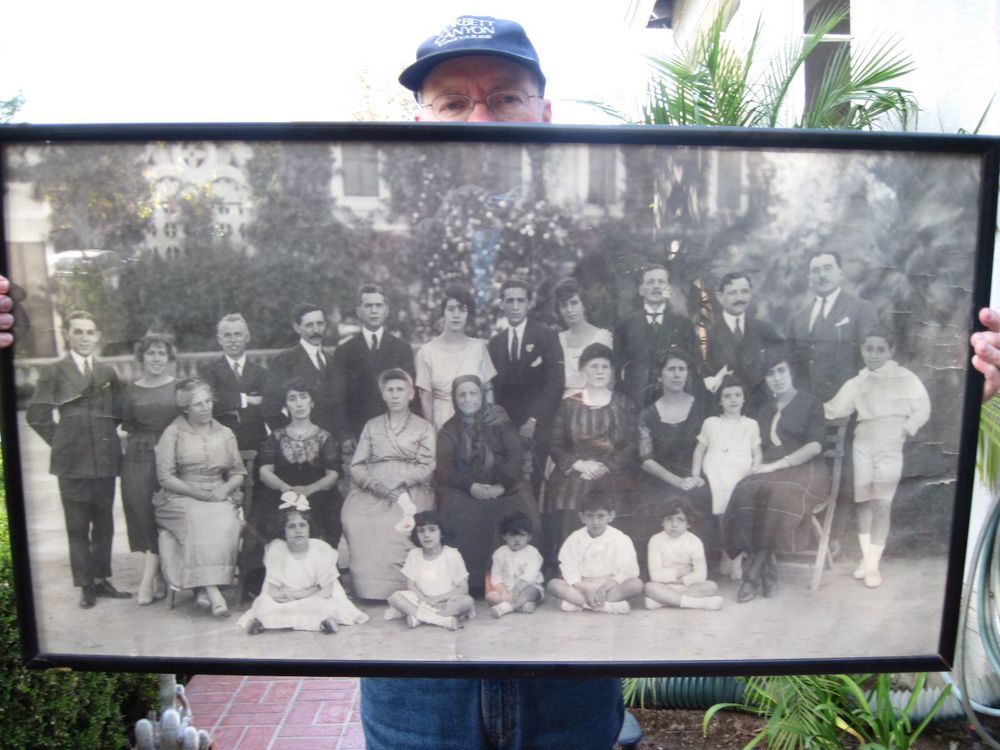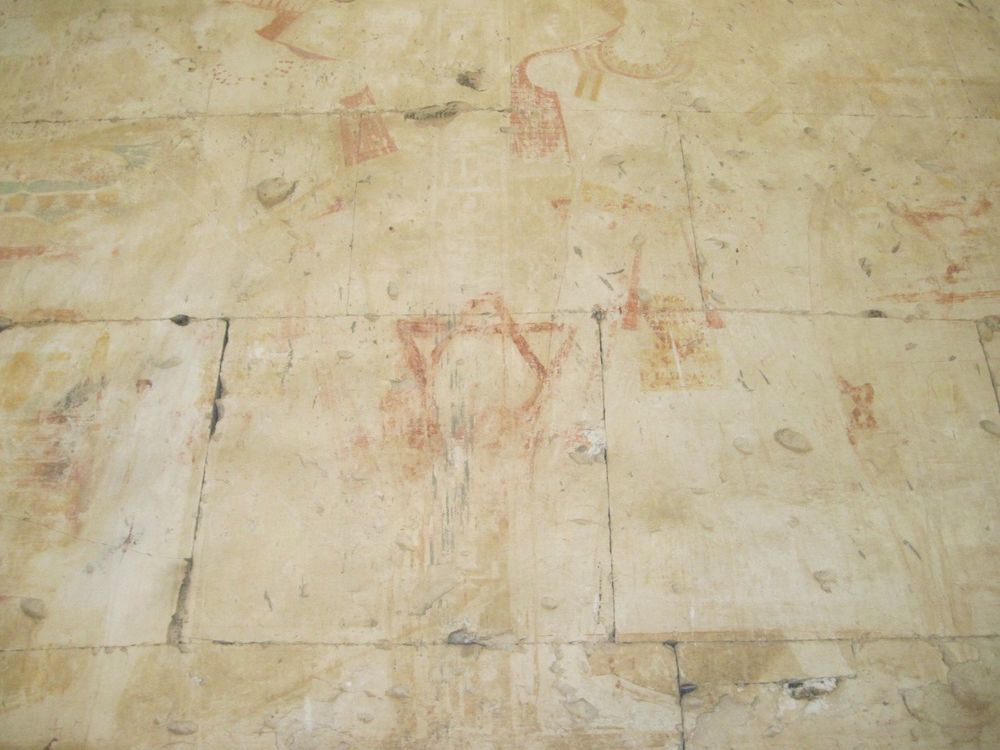words + photos by Carolyn Handler Miller
Jews and Egypt. Two words that rarely meet in the same sentence. Unless you happen to be talking Bible talk and are retelling the story of Exodus, as we Jews do every spring during Passover. Or unless you are talking politics, and are discussing Egypt’s relationship with Israel. Or unless you possess a torn old photo like the one I have, plus a burning curiosity and the chance to travel to Egypt.
 You see, the relationship between Jews and Egypt is a highly personal one for me, and one that the revolution in Egypt brought into sharp focus.
You see, the relationship between Jews and Egypt is a highly personal one for me, and one that the revolution in Egypt brought into sharp focus.
A large branch of my family once lived and thrived in Egypt until the 1950’s, when another Egyptian revolution, one barely remembered today, ultimately pushed Egyptian Jews into exile. In 1952, during that earlier revolution, King Farouk was forced to abdicate and soon after, Gamal Nasser took over the reins of government. Unlike the laid-back playboy king, Nasser was unfriendly to Jews. During the 1956 Suez Crisis, he declared them enemies of the state and Jews were no longer welcome in the country.
So the entire Egyptian branch of family fled to Paris. At that point, we, the American branch of the family, lost track of them. As far as we all knew, the story ended there.
And we might have forgotten all about them, except for this old black and white photo set in a broken wooden frame. It had been passed down from family member to family member and had finally fallen into my hands when none of my cousins showed any interest in it. Though they mocked the old-fashioned looking group, I found them fascinating. I longed to know more about them and their exotic life in Egypt.
The photo captures my Great Grandmother at a family reunion in Alexandria. The group of about 25 stiffly but proudly faces the camera. In the background you can see lush vegetation and a large house embellished with ornate woodwork, likely the house where some of them lived. The picture was probably taken in the 1920’s, judging from the clothes the family is wearing. Flapper outfits for the young ladies, big white hair bows for the little girls, short pants for the boys, and traditional babushka attire for some of the elderly women. My Great Grandmother sits near the center of the group, with the erect, perfect posture she was famous for, her hair still dark and full, and wearing the type of Victorian outfit she favored right up till her death in her late 80s. She was perhaps in her 50s at the time.
Though my Great Grandmother had been a long-time resident of San Francisco by then, she and many other members of my family had been born in what was then Palestine. The Egyptian and Palestine branches of the family were closely connected in those days, though no one in my family can accurately say how they happened to be living so far from Germany, where they once originated from, or how everyone was related.
But we do know my Great Grandmother was raised among Arab neighbors and grew up speaking Arabic. Though a devote Jew, she never expressed a bit of enmity towards Arab nations, despite the political hostilities between Israel and so much of the Middle East. And even though she spoke fluent English, on her deathbed she lapsed into a foreign tongue. It was Arabic, the comforting language of her childhood. A translator had to be brought in to tell the family what she was saying.
The Egyptian kin in the photo were her aunts and uncles and cousins, and she had kept in close touch with them through the years. The photo commemorates a visit to this family during one of her many trips abroad and must have been taken long before the unpleasantries stirred up by Nasser.
And in the fall of 2009, with that photo in mind, I was determined to find whatever traces of my family still existed there. My husband and I had signed up for a tour of the great archeological sites of ancient Egypt. Although Alexandria wasn’t included in the itinerary, I made special arrangements to go to there after the tour ended, specifically to see the city where my family once flourished.
 Once in Egypt, I wasn’t expecting to see evidence of Egyptian’s Jewish population before we reached Alexandria, but unexpectedly, we did. The most moving to me was a Star of David scrawled in faded red paint on the wall of the ancient Egyptian temple in Abydos – a work of graffiti, I was told, that dated back to the days of the early Christians, when Jews fleeing from some persecution or other took shelter in this structure.
Once in Egypt, I wasn’t expecting to see evidence of Egyptian’s Jewish population before we reached Alexandria, but unexpectedly, we did. The most moving to me was a Star of David scrawled in faded red paint on the wall of the ancient Egyptian temple in Abydos – a work of graffiti, I was told, that dated back to the days of the early Christians, when Jews fleeing from some persecution or other took shelter in this structure.
In modern times, almost 80,000 Jews called Egypt home until Nasser came to power. But by the time we visited, only a handful remained, an estimated 30 or so. But one day I actually met one of them (or so he claimed to be, perhaps all the better to sell me Jewish-themed trinkets). I encountered him one day in Cairo, plying his wares outside the beautifully restored Ben Ezra Synagogue. This structure had served as a place of worship for Jews since 882 AD.
It was one of approximately 11 synagogues still standing in Egypt, though only a couple are still used for services. I was happily surprised to learn that the Egyptian government was busy restoring many of them, considering them an important part of Egyptian history. Ben Ezra, however, had been restored by a private organization.
But aside from the graffiti star, the trinket vendor, and the old synagogue, I saw not one other sign of thousands of years of Egyptian Jewry during the tour. I grew increasingly eager to know what I’d find in Alexandria. What clues to my family’s existence might I discover there?
As it turned out, it wasn’t destined to be an easy pilgrimage. Though our guide for the day for the day was a trained archeologist, she was mostly at a loss for what to show us. The history museum, while full of fascinating antiquities, contained nothing with a Jewish theme, and neither did the Greco-Roman ruins we visited. Even though Alexandria was home to 40,000 Jews in the middle of the twentieth century and its Jews had lived there since ancient days, made welcome by Alexander the Great himself, there was virtually nothing left to see.
One thing saved the day, though. In the center of Alexandria we drove up to the magnificent Eliyahu Hanavi Synagogue, reputed to be the one of the most beautiful Jewish houses of worship in the Middle East. Unfortunately, we could only view it from the outside, since no visitors were allowed in that day. We learned this elegant structure could seat 1000 people and was once the center of life for city’s Jews. it’s highly possible my family once worshipped there. It was tantalizing physical evidence of Alexandria’s lost Jewish community.
As we drove around the old Jewish neighborhood surrounding the synagogue, I stared out the car window, searching for scraps of evidence of the Jewish residents who once lived and worked there. But there were no faded signs in Hebrew letters and certainly no abandoned delis or empty Jewish shops. Those would have vanished decades ago, the real estate being too valuable to stay vacant.
However, while driving through the city, I did I catch glimpses of homes decorated with ornately carved wood and surrounded by tropical foliage, not so different from the house in my family photo. A tiny connection could be made.
And our guide was able to clear up one mystery: the close ties between my family in Alexandria and my family in Palestine. It would have been very simple for them to visit one another, she explained, because a train once ran between Alexandria and Palestine. It was a relatively short ride, and in those days, relations between Jews and Arabs were cordial and travel between the two countries was easy.
I like to think of my relatives hopping on the train in Alexandria or in Palestine, going to visit each other and carrying baskets of delicacies and family funny stories to share.
That was before the old Egyptian Revolution, of course. And now there’s been a new Egyptian Revolution. Who knows what it will mean for the Jews in that part of the world? But no matter what, it’s too late to turn back the clock. There won’t be any more family reunions in Alexandria.
Carolyn Handler Miller is a writer who works across a variety of media. Originally beginning her career as a newspaper reporter and magazine journalist, Carolyn's projects spans TV shows and specials, feature films, books and new media. She is one of the pioneering writers in the field of interactive narrative, where she has contributed to over four-dozen projects as a writer, writer-story designer, and consultant. She is the author of “Digital Storytelling: A Creator's Guide to Interactive Entertainment” (Focal Press), now in its second edition.